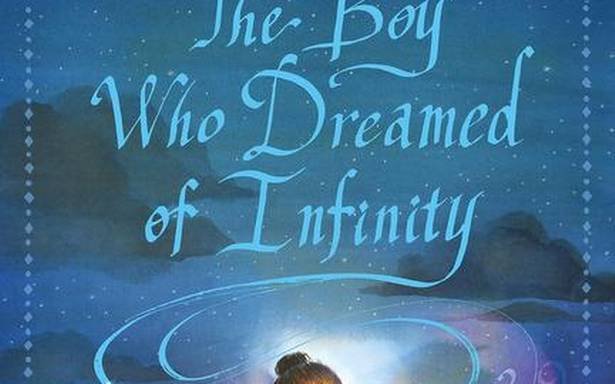
A brand new illustrated youngsters’s ebook on Srinivasa Ramanujan throws mild on the mathematician’s boyhood
In 1914, a younger faculty dropout from Chennai, who had reinvented a lot of recent arithmetic, was “found” and invited to the College of Cambridge to steer the lifetime of a scholar. Srinivasa Ramanujan labored along with his British friends and printed a few of his authentic analysis, however he additionally fell critically unwell. On the finish of World Struggle I, he returned to India, the place he died on the age of 32.
Whilst Ramanujan lay dying, he continued to report his findings. Later, distinguished mathematicians would spend years proving outcomes he had intuited. His work discovered functions in areas of science that didn’t exist in his lifetime: black holes, the string concept, and area journey, to call only some.
Amy Alznauer’s illustrated youngsters’s ebook, The Boy Who Dreamed of Infinity, tells the story of a younger Ramanujan. Booklist, an American Library Affiliation publication, calls it one of many high 10 biographies for younger readers for 2020. The writer, who teaches arithmetic on the Northwestern College in Chicago, additionally has an important backstory concerning the rediscovery of Ramanujan. Excerpts from an interview.
You connection to Ramanujan’s work is deeply private.
In 1976, my father George Andrews, an American mathematician, had a convention to attend in France. Turned out, he would get a greater airfare deal if he stayed longer. He determined to go to the College of Cambridge, the place he had a standing invitation to rummage by the papers of G.N. Watson who had been tasked with offering proofs for Ramanujan’s theorems. Watson’s curiosity light by the Nineteen Thirties, and in 1965, he died, forsaking a messy field of papers which received deposited on the library.

Within the uncatalogued field, my father found a sheaf of 138 handwritten pages. From a letter Ramanujan had written to his mentor G.H. Hardy in Cambridge, mathematicians knew he had been engaged on “mock theta features” on his deathbed. (Ramanujan had most likely named them after the Mock Turtle from Alice in Wonderland. Every time he received a prize for arithmetic in class, he was typically given a ebook of English poems!) These features have been the subject of my father’s dissertation and held a particular curiosity for him.
Instantly, my father received the manuscript xeroxed. This spectacular discover, which he known as the ‘Misplaced Pocket book’, was answerable for the mathematical neighborhood’s renewed curiosity within the work of the genius. Ramanujan was rediscovered half a century after his demise — virtually completely by likelihood.
In some sense, you have got needed to inform Ramanujan’s story ever since.
Once we had accompanied our father on that journey to Europe, I used to be just a bit lady. In faculty, I majored in arithmetic, however enrolled in an MFA program on the College of Pittsburgh a lot later. In 2004, I received a scholarship and went on a five-week journey to India to do analysis on the lifetime of Ramanujan.
I went to Kumbakonam the place Ramanujan grew as much as get a tangible really feel for the locations the place Ramanujan lived, walked, and did his work. I went to his college, his residence, which is now a museum, and the close by Sarangapani temple the place he experimented with numbers on the flooring of the darkish corridors when it was blazing sizzling exterior.
I needed to write down the story of the ‘Misplaced Pocket book’ however after I grew to become a mom, my curiosity in youngsters’s books grew. I did this image biography.

Your framing of younger Ramanujan’s story is so contemporary.
The mathematician Ramanujan’s story is well-known, however for me his boyhood is marvellous — this younger little one who falls in love with maths and figures out virtually the whole lot on his personal, only for the love of it. I needed youngsters to see the opportunity of maths being greater than textbooks, greater than solutions to downside units. I needed them to see that maths may very well be an journey, a quest.
You’ve have made the genius a relatable character. The ebook is a visible delight.
The biography by Robert Kanigel, The Man Who Knew Infinity, gave me some particular incidents from the prodigy’s childhood. One other useful resource was Ramanujan: Letters and Reminiscences, edited by P.Okay. Srinivasan, a maths educator from Chennai. This assortment of essays has contributions by individuals who had recognized Ramanujan.
On my go to to Chennai, I noticed kolams, the geometric designs which ladies in South India draw with rice powder on their doorsteps each morning. I used to be fascinated by these patterns — their symmetry and precision. The kolam maker seems to create one thing lovely, however there are advanced mathematical rules hidden in that incredible on a regular basis piece of artwork. Such illustrations organically grew to become a part of the image ebook, enriching the narrative.
The interviewer is a Boston-based science journalist.